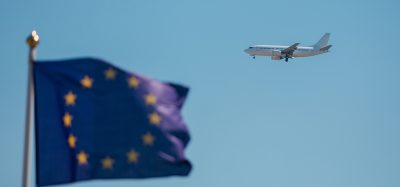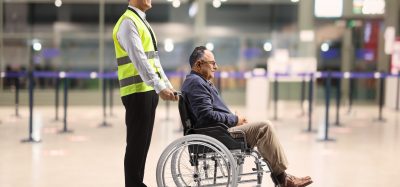COVID-19 impacts on Queensland Airports
- Like
- Digg
- Del
- Tumblr
- VKontakte
- Buffer
- Love This
- Odnoklassniki
- Meneame
- Blogger
- Amazon
- Yahoo Mail
- Gmail
- AOL
- Newsvine
- HackerNews
- Evernote
- MySpace
- Mail.ru
- Viadeo
- Line
- Comments
- Yummly
- SMS
- Viber
- Telegram
- Subscribe
- Skype
- Facebook Messenger
- Kakao
- LiveJournal
- Yammer
- Edgar
- Fintel
- Mix
- Instapaper
- Copy Link
Posted: 4 May 2022 | Amelia Evans | No comments yet
Queensland Airports Limited Chief Financial Officer, Amelia Evans, spoke to International Airport Review about the impact that the COVID-19 pandemic had on Queensland Airports and the measures and initiatives taken to overcome and adapt from the crisis.


Nanny, Timi Caldwell sees her daughter Mikaela Mew, and her grandchildren Stevie, 5, and Chloe, 2, for the first time in 9 months. Image taken at Gold Coast Airport as state border reopened. Credit: Queensland Airports Limited
Travel restrictions associated with the management of COVID-19 in Australia and internationally have had a significant impact on the Queensland Airports Limited (QAL) group of airports, including the Gold Coast, Townsville, Mount Isa and Longreach airports, over the past two years.
In January 2020, the first known COVID-19 positive passengers arrived at Gold Coast Airport and about two months later, by 20 March, the Australian border had closed to all international passengers, except for returning Australians. The Queensland border closed to inter-state travellers a few days later.
Leisure travel
With a strong focus on leisure travel, Gold Coast Airport, previously the sixth busiest airport in the country, was hit particularly hard. Usually receiving more than 50 flights per day, the terminal was shut for a total of 45 days from April onwards in response to no regular commercial services.
The significant financial impact of this required a series of actions to be undertaken, including pausing strategic initiatives, obtaining shareholder and financier support, workforce reductions, contract re-negotiations, capital reprioritisation, commercial rent relief, and importantly, ensuring a COVID-19-safe working environment for all employees.
The disruption to the company and its employees was significant, with passenger volumes dipping to historically low levels in 2020.
Operational actions included contingency plan rostering, workforce capability reviews, enhanced hygiene protocols, and increased communication with employees and other stakeholders to support a series of COVID-19 management measures including mask wearing, vaccination mandates, and remote working.
The strength and resilience of the teams across all four airports was evident from the continued quality of outputs, ongoing adaptability, and commitment to protecting the sustainability of our business”
It was throughout this period that QAL management also undertook culture and sentiment check-ins with the team, given the challenging working environment. The strength and resilience of the teams across all four airports was evident from the continued quality of outputs, ongoing adaptability, and commitment to protecting the sustainability of our business.
By May 2020, there were positive indications of passenger recovery, based on traffic levels reaching a peak of 80 per cent of pre-COVID-19 capacity. The Queensland border reopened to interstate visitors in July 2020 and return to work plans were put in place across the business. However, by August fresh outbreaks of the virus had occurred and a hard border was introduced by the Queensland Government with NSW and Victoria – key markets for the Gold Coast, responsible for about 80 per cent of the port’s usual traffic.
And, the aviation industry was, at this point, severely impacted by COVID-19 operationally and financially, with other industries such as tourism and higher education also experiencing similar impacts.
QAL passenger traffic fell to about 10 per cent of pre-COVID-19 levels in July 2020, with more lockdowns and restrictions to follow. The government also instigated a ‘border bubble’, resulting in several of QAL’s NSW-based employees unable to attend work without an exemption as an essential worker, presenting operational challenges.


Gold Coast Airport terminal expansion render – departure hall. Credit: Queensland Airports Limited.
The road to recovery
Lockdowns and border closures continued in 2021, but when borders were open, the recovery at Gold Coast Airport was strong – and passenger traffic peaked in April 2021. International borders remained closed throughout the year, apart from a travel ‘bubble’ with New Zealand which lasted for about four months during the year. Airport worker vaccination mandates were introduced by the Queensland Government in December 2021, delivering confidence to passengers and employees.
The real recovery for the QAL group, and particularly Gold Coast Airport, started in December 2021. There was a sense of optimism when the Queensland border opened for the final time. And that has continued in 2022, with key international links re-established – including Singapore and New Zealand.
In February 2022, 391,912 passengers passed through QAL’s four ports – 58 per cent more than February 2021 and nearly 70 per cent of pre-COVID-19 capacity.
It was clear travel confidence was steadily returning.
Leisure travellers are leading this resurgence, which will benefit the QAL group, particularly given the strong leisure focus at Gold Coast Airport. The Gold Coast Airport terminal expansion, which has progressed despite the significant financial impacts of the pandemic, will open later this year (2022).
The terminal expansion doubles our terminal footprint and will deliver a fresh, modern experience for domestic and international passengers using Gold Coast Airport and as flight connectivity and capacity grows; the expanded terminal will deliver more visitors to this region.
About the author


Related topics
Aeronautical revenue, COVID-19, Non-aeronautical revenue, Passenger volumes, Safety, Security
Related airports
Gold Coast Airport (GCA), Longreach Airport (LSE), Mount Isa Airport (ISA), Townsville Airport (TSV)


















